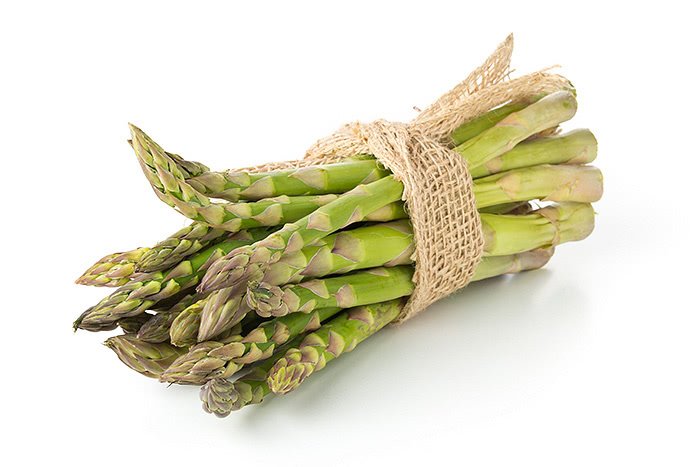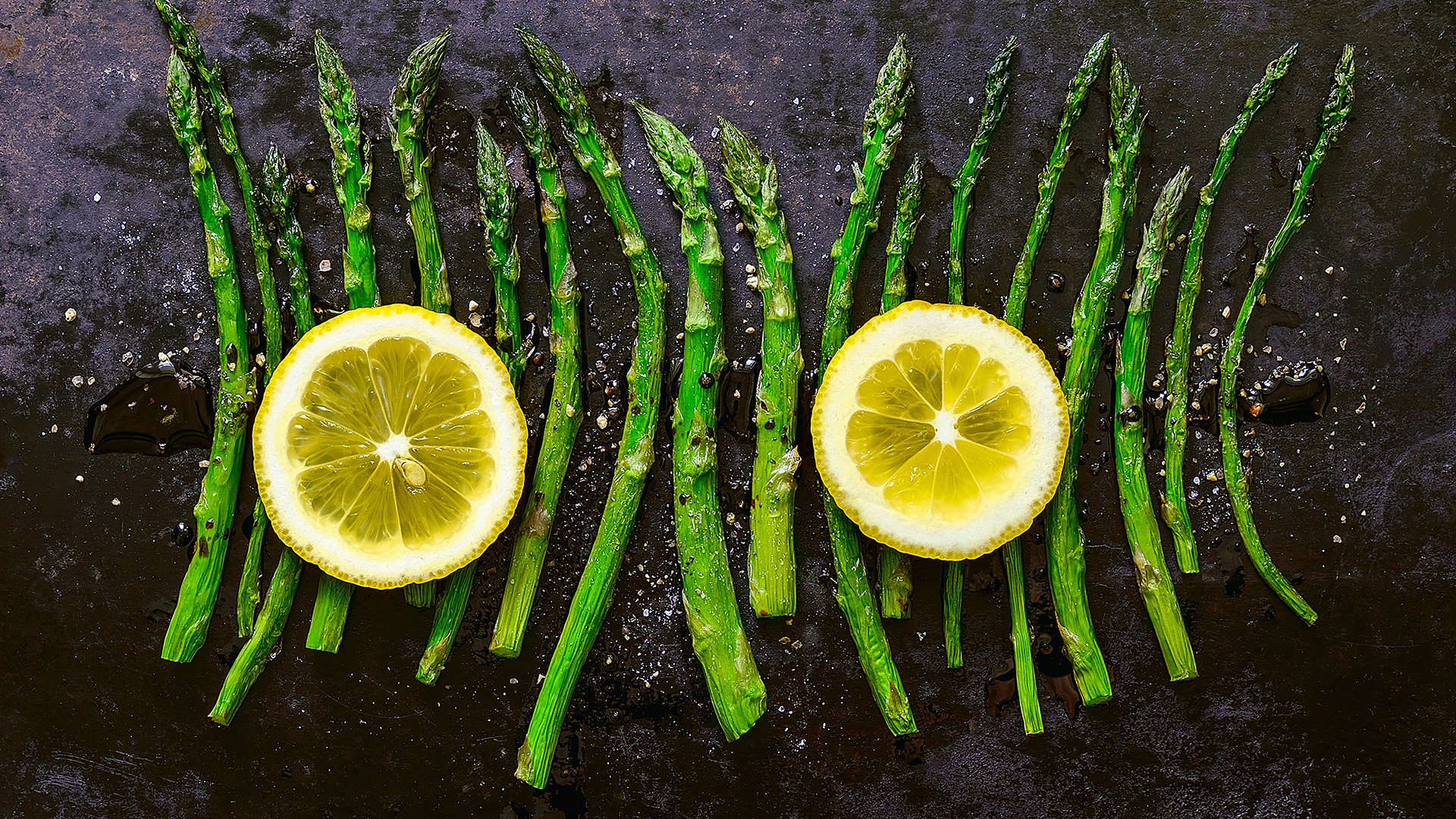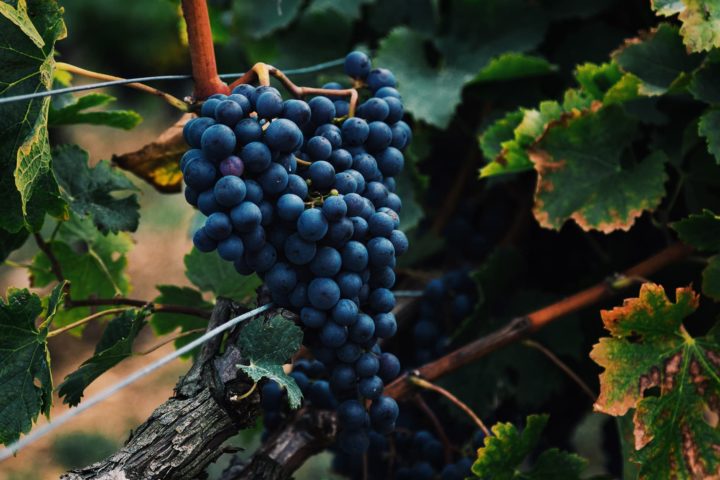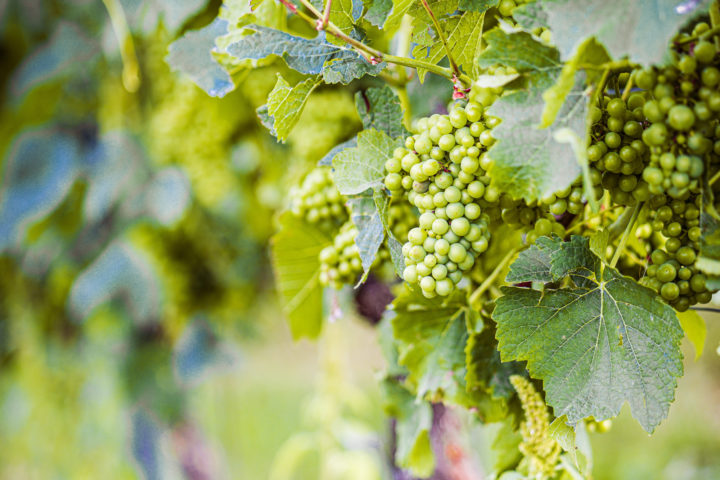Green asparagus is the most popular type of asparagus in the world. No wonder, thanks to its green color, it has more vitamins than its pale relative and is also much more aromatic. Its color is not due to a particular variety, but is due to the differences in cultivation of the variants. In this article you will learn how to properly prepare green asparagus and what distinguishes it from pale asparagus.
What awaits you in this article
- How to prepare green asparagus correctly
- White or green – sunlight makes the difference
- March to June – season of green asparagus
- Buying green asparagus – What you need to watch out for!
How to prepare green asparagus correctly
If you like it simple, you are particularly well advised with green asparagus, because this does not necessarily have to be peeled. Its shell is much thinner and not as fibrous as that of the white variety. Just cut off the woody ends generously – done. If the stems are particularly long and thick, you may need to peel the lower third. You can recognize this area by the fact that it is significantly lighter in color than the rest of the asparagus.
Another advantage of green asparagus is that it does not need to be cooked as long as white asparagus and its preparation is very uncomplicated. You can even enjoy it raw without any problems, for example in thin strips in a salad.
Boil or steam green asparagus
If you want to prepare your asparagus in the crock pot, be sure to use as little water as necessary. The asparagus spears should only be covered with water so that their flavor is not lost in the cooking water. Just add a little salt to the cooking water to intensify the flavors of the asparagus. You can mostly do without sugar with today’s asparagus cultivars. Unlike in grandmother’s day, modern cultivated forms have few bitter substances, which would have to be balanced by sugar.
The cooking time depends largely on the diameter of the asparagus. Thick sticks (ø approx. 10 mm) require about eight minutes, while thin ones (ø approx. 6 mm) can be cooked after just four minutes. So always keep an eye on your asparagus and test its cooking level every now and then.
If you are particularly keen on the vitamins, you should rather steam your asparagus. In this way, it develops its full flavor and most of the vitamins are preserved. This tip applies to any type of vegetable.
By the way, you don’t need the bit of butter in the cooking water either. Most of it remains as a grease film in the pot and ends up in the sink. Nevertheless, you should always serve asparagus with a little fat, because it contains the fat-soluble vitamin E, which the body can otherwise not absorb. The best way to liquefy the butter is in the microwave and then pour it over the asparagus or toss it briefly in it.
Fry green asparagus in the pan
Preparation in a pan is particularly suitable for green asparagus and refines the spears with fine roasted aromas. You can either sauté it whole or cut it into small pieces. The latter is ideal if you want to serve it later as a salad and also shortens its cooking time.
Simply add some fat to a pan and sauté the asparagus for five minutes over high heat. To make sure it gets an even color, you should turn or swirl it regularly. Due to its high heat tolerance and buttery aroma, Alba oil is particularly suitable for this purpose.
Green asparagus from the oven
Preparation in the oven is the easiest way to prepare green asparagus. The oven does most of the work here, while you can sit back and relax.
Before doing so, brush the sticks with a little rapeseed or Alba oil and preheat the oven to 200 °C. Spread the green asparagus on a baking sheet (don’t forget baking paper) and sprinkle with some grated cheese. I like to use a slightly aged gouda. When choosing cheese, make sure you don’t overdo it with flavorful cheeses. Otherwise you will mask the subtle inherent flavor of the asparagus. Then add salt and pepper and place in the preheated oven for 8 to 10 minutes.
If you don’t like your asparagus quite as firm to the bite, you can steam or precook it briefly (5 min.) beforehand.
Grilling green asparagus – Perfect for summer
Thanks to its more tart flavor, green asparagus is perfect for the grill. To do this, simply drizzle the sticks with a little oil and grill over high heat for about 10 minutes. Make sure that there is sufficient distance to the embers and use only a fat that can withstand the high temperatures (rapeseed oil). If you want to save some time, you can pre-cook the asparagus in the crock pot. This way you can cut the grilling time in half to 5 minutes.
If you want to forgo roasting flavors, you can wrap your asparagus in aluminum foil with a little butter and salt and place on the grill over indirect heat for 10 minutes. This variant is perfect to prepare in portions.
White or green – sunlight makes the difference

Compared to pale asparagus, green asparagus is particularly rich in vitamins and has a more intense, tangy aroma. In addition, thanks to its green color, it has more antioxidants than the white. So if you want to do yourself some good, you’d better reach for green asparagus.
The cultivation of green asparagus is easier and less costly than that of white asparagus. Whereas bright white asparagus requires mounds of earth to be piled up, which are then often covered with plastic film and the asparagus has to be dug up individually when harvested, this is not necessary with green asparagus. This simply grows out of the ground and is pricked from a length of 15-20 centimeters.
The color difference does not result from different breeding forms, as is often assumed. Although there are now special cultivars for pale and green asparagus, it gets its rich green from the sun. While pale asparagus spends its entire – albeit rather short – life underground and thus in darkness, green asparagus is allowed to bathe extensively in the sun. In the process, it forms the substance chlorophyll, which provides its appetizing color and serves the plant for energy production (photosynthesis).
The complex cultivation of white asparagus is one of the main reasons for its price. To prevent the stalks from discoloring unintentionally, thick mounds of earth are piled up, from which the asparagus must be dug out for harvesting as soon as it announces itself with a small bulge of earth on the top of the mound. Since asparagus fields are often covered with black-and-white film, this must be removed each time before the asparagus can be dug up by hand, pricked and the hole in the ground filled up again. The films serve to regulate the temperature in the asparagus field and also prevent discoloration of the heads should the asparagus ever break through the surface of the soil. Green asparagus, on the other hand, is allowed to enjoy the sunlight to the fullest. No mounds are built for him, and no plastic sheeting is spread. It simply grows out of the ground and is harvested above ground.
What they have in common is that they are stung with a length of 15 to 25 centimeters.
March to June – season of green asparagus
The main season for white and green asparagus does not differ, after all, it is the same plant. The freshest asparagus is available in this country from the end of March to mid-June. In cold years, the season may be slightly delayed and begins only in April. Since green asparagus enjoys greater popularity worldwide than white, it is available almost year-round and is imported by the ton.
Since asparagus – regardless of its color – loses considerable flavor just one day after harvest, the imported spears on offer are usually of dubious quality with a miserable eco-balance.
Buying green asparagus – What you need to watch out for!
To get the best possible quality, you should generally only buy asparagus when it is in season. But even from April to June, you should not just grab blindly, but examine your asparagus carefully before buying and test for freshness. If it is limp, soft and has brown cut surfaces, leave it. Fresh green asparagus must be firm and have a rich, green color. If you lightly press the cut ends and some juice comes out of the cut surface that smells discreetly – not penetratingly – of asparagus, you are most likely holding fresh asparagus in your hands. It’s best to buy it directly from the asparagus farm and ask when the spears were cut. For the best possible flavor, it should be consumed on the day of harvest.
You should not pay attention to the commercial classes. These are based primarily on visual characteristics such as thickness, color or growth habit and say nothing about the taste qualities. If uniform shape or coloring are not important to you, you can safely reach for the lower commercial grades or even broken asparagus.









